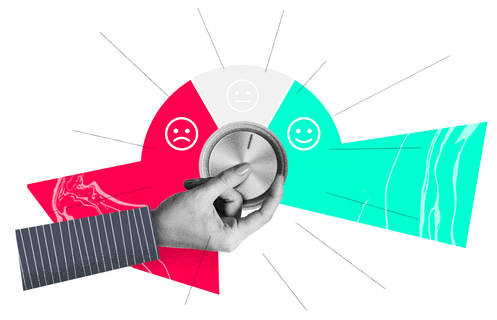How To Differentiate Between Digital Experience And CX?
For the effectiveness of the enhanced consumer plan, DX is essential. They are eventually enhancing the cumulative CX by increasing the multimedia platforms.
They have to continuously gather consumer reviews through the digital world to maximize the DX. Locating customer engagement data helps us to understand where friction points exist on the customer path so that their interaction can be iterated and improved.
The modern user experience is the amount of a consumer’s digital experiences with a business and the subsequent perception that a consumer returns.
In contrast to the rapid proliferation of digital platforms, new terms have emerged to represent the transition from speaking in terms of site and content marketing to concentrating more on digital experience marketing, including the digital experience network or the digital experience system.
HOW TO DIFFERENTIATE BETWEEN DIGITAL EXPERIENCE AND CX?
Digital experience is a general term that covers the various digital platforms that currently need to be handled by organizations. The internet reality, though, is not anything like the digital customer perception. Digital encounters are individual connections, while all digital interactions which an individual does with a company are now the total digital consumer experience. The Digital Experience (DX) is just the total value among all digital customer contact and the consequent implication of a client walking away. Business owners could also concentrate on the critical five goals for an effective digital experience strategy to avoid frustrating customers, decrease their lifetime value, or drive them to competitors due to poor digital experiences. The five goals are functionality, omnichannel, convenience, personalization & deliverability.
Consumer Experience (CX) is just how, through plenty of experiences during the customer life cycle, a consumer understands the brand. Customers are very well and hyper-connected than ever in the new digital age. Brands are gradually looking to software solutions as either a way to optimize consumer service across networks, including a rising group of contact channels. Customer experience can be measured based on all the experiences between a customer and the goods, services, and business products. While a good consumer engagement generates positive returns, many organizations also fail to define an action plan to accomplish these results, with more clients, more profits, and more loyalty.
There is an increasing need for new experiences, and anywhere whoever potential customers and consumers may be, with online being an omnipresent aspect of daily life. This allows marketers to be present on any platform they visit and connect with their customers if they wish to reach any of their future global markets. It is essential to ensure a positive customer experience when looking for information digitally. Any digital bit of information, also including online and smartphone communications is involved with DX. Beacons, IoT cameras, facial recognition, wearables, and all other possible digital touchpoints are all provided by DX.
The abundant amount of knowledge it provides is one of the most enticing facets of building a better digital environment for their consumers. DX can be measured even more effectively than non-digital systems because of the volume of information generated in the digital world, namely cookies, web modes, current accounts, and other information sources.
The Digital Experience (DX) is incompatible with either the Customer Experience (CX), which involves in-store and other tangible experiences. DX is the digital representation of such activities if CX demonstrates compassion, establishes trust/faith, and social interaction.
One element of a digital transition is the consumer experience (CX).
A part of the activity consumer experience is just all customer experiences, every communication tool, and customer engagement level. Any time the client connects with the company, CX is an ongoing operation, increasing and changing. The combined result of multiple touchpoints is an exceptional client experience. Excellent CX delivers precise interactions that, every step of the process, exceed consumer needs. Then it will increase the consumer satisfaction rate if you deliver a superior CX. They will raise revenues from 25 percent to 95 percent by growing consumer satisfaction rates by 5 percent.
Excellent customer service has multiple facets, but at a high stage, here is what it comes down to:
- Any contact that a client has with a product is simple and costless.
- Whenever a company interacts with a client, it must demonstrate concern, attention, reverence, and respect to have a positive experience.
If they want to engage in the previous digital economy, all companies have to become digital enterprises. Forrester outlines the significance of “digital consumer experience steeped in service efficiency,” highlighting that the use of digital media as a grounds for all consumer experience in many other companies can keep driving revenue growth, not just uses and applications.
Guess it depends on the demographic and the sophistication of the number of websites, and all methods have merit. Suppose your clients are predominantly digital, but your digital offerings are behind the market norm. In that case, you can get up to speed quickly with an initial emphasis on DX, while a more experienced digital company may choose to take a proactive solution to keep the CX plan cohesive. In any form, buyers have different performance requirements, making it necessary for organizations to increase their ability to offer better digital experiences.
The perceptions of consumers have increased. While doing transactions with the corporation, they expect excellent service. You have to educate yourself to completely leverage the data generated by digital environments to reach and surpass those standards. You will also have to deliver customized information to have a perfect and smooth all-around service. Note, although both methods are related, they also have boundaries between them, which different definitions can be regarded. More encounters, including on the internet, some mass media ads, receipts, or even other face-to-face communications, require customer support.
Businesses should not continue to make the tragic error of dismissing digital consumer service initiatives’ value when Customer Experience continues to demand the title as the top brand point of difference.
Note, in standard and non-digital terms, and clients should not think about their experiences. The interaction is the amount of all consumer encounters that a product has through all potential digital touchpoints and communication instances with the product, brand, resources, service.
Take a deep dive on this subject by attending the X factor webinar on 10 February, 2021.




